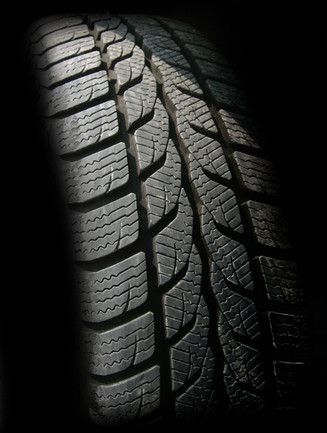WHEN SHOULD I REPLACE MY TIRE? ESSENTIAL TIRE TIPS
- Sebastian Pineiro
- Nov 4, 2024
- 2 min read
Updated: Feb 4

Learn to: check tread depth, when to replace, and identify damage on tires. We cover what you need to know to stay safe while driving.
Quick Terms to Know When It Comes to Tires
Tread: This is the part of the tire that contacts the road, composed of sipes and grooves. It's crucial for traction, stability, and control.
Sidewall: The sidewalls are the two vertical sections of the tire that should not touch the ground. They align with the wheel's rim and provide structural support.
Shoulder: This is the the area between the tread and sidewall, and is responsible for maintaining stability when navigating turns.
When Should I Replace My Tires?
Knowing when to replace your tires is crucial for maintaining your vehicle's safety and performance. A general guideline for checking tire wear is to measure the tread depth. The legal minimum tread depth is 2/32” (approximately 1.6 mm). While this might seem small, you can easily see it by looking at the wear bars on your tires. Many modern tires feature designs known as "wear bars", that indicate how worn your tires are. It would be best not to wait until the tread of the tire is completely depleted, as the legal minimum doesn’t equal the safe minimum. If the tread is on the same level as the wear bars, it’s time to replace your tires.
Image 1: displays tires with a good amount of life
Image 2: displays tires with a fair amount of life
Image 3: displays tires that should be replaced
How to assess Punctures and Damage
Punctures can complicate matters. If a nail or other object punctures the tread, you may not need to replace the tire immediately. However, a replacement is necessary if the puncture occurs on the sidewall or shoulder. Punctures in these areas can cause serious issues, jeopardizing tire stability and steering. We recommend addressing any concern with a tire puncture before further damage occurs.

Additional Tips for Tire Care
Regular Inspections: Check your tires monthly for wear and tear, including tread depth and visible damage.
Proper Inflation: Ensure your tires are inflated to the manufacturer's recommended pressure. Under-inflation can lead to blowouts, while over-inflation can cause uneven wear. We recommend checking your tire pressure weekly along with your TPMS indicator (Tire Pressure Monitoring System).
Rotation and Alignment: Regularly rotate your tires and check wheel alignment to extend their lifespan and improve handling
Tire Replacement: It's best to replace tires in twos or all four. Think of it this way: tires are like shoes; you wouldn't replace just one shoe from a pair.
Professional Consultation
If you have questions about your needs or your car's condition, consider consulting us. We offer advice over the phone, via WhatsApp, mail, or in person (fees applicable for in-person consultations); along with consultation, we offer tires specialized for your needs. Feel free to try our services out through the link below.






Comments